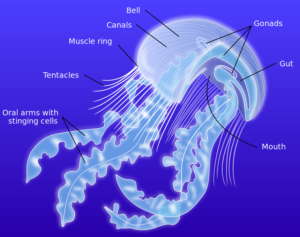While to most people it may not seem important, as a person who regularly writes and blogs about matters dealing with air – pollution, quality, you get the idea – it matters to me. I will get into specifics in a moment.
But first …
A parallel
For those who read content on this blog on a regular basis, perhaps you’ve noticed a penchant and preference for my use of the term “subsurface” in place of such terms as “underwater,” “undersea” and “underground.”

“Underwater” and “undersea,” when you think about it, really don’t convey their literal meanings, these being “under water,” and in the latter case, within or on the sea floor or, in other words, “under [the] sea.” The same also applies to “underground,” and hence my preference for the term “subsurface.”
Picking nits?
Am I being nitpicky? Some might argue I am. But, to me, this is all about consistency. And, it isn’t just that: this is also about why being consistent is important.
Okay, so the most relevant example I can think of is regarding the use of the word “toxin(s)” in place of “poison(s),” “toxic(s),” etc.
I had previously used “toxin(s)” and “toxic(s)” interchangeably until a reader of one of my posts pointed out (via the “comments” provision) that my usage of the word “toxins,” was indeed incorrect.
In the post “At long last, a curbing air-pollutant-emissions-and-greenhouse-gases focus,” at one location early in the article (second paragraph, first sentence), I used the word “toxins.” In response, reader Judith Weis related, “Alan Kandel – I am wondering what you mean by ‘haze, poisons and/or toxins in’ since ‘toxins’ are poisons made by cells in living things like rattlesnakes, jellyfish, and bees. I don’t think there are any of those in polluted air. What poisons are in the air can correctly be called toxic chemicals, toxicants, or chemical pollutants – but NOT ‘toxins.’” (Notice the strong emphasis on the word “NOT”).

And, my reply to Ms. Weis? “Noted. Edited. Thank you.”
For verification, I referenced the “Random House Webster’s College Dictionary,” 1991 edition in search of the word “toxin” on pages 1411 and 1412. Sure enough, it turns out Ms. Weis, in direct reference to this, was right. I was glad I was set straight and am grateful.
Relativity
In another somewhat thorny and related circumstance, this time having to do with my downloading and reading of a copy of the Health Effects Institute’s “New HEI Report on Exposure to Traffic Finds Evidence of Health Effects in Children Near Major Roads, and Continuing Data Gaps” Jan. 13, 2010 press release.
The first paragraph reads as follows: “A new report by a Special Panel of the Health Effects Institute (HEI)1 – of the most comprehensive and systematic review of the worldwide traffic emissions and health science to date – has found that there are substantial gaps in what we know about exposure to traffic air pollutants and their health effects, but there is sufficient evidence that exposures to traffic-related air pollution cause asthma exacerbation in children and suggestive evidence that they might cause other health effects. The Report, published today at www.healtheffects.org , noted that the zones most impacted by traffic-related pollution are up to 300 to 500 meters from highways and other major roads, and calculated that for large cities in North America that would include 30% to 45% of the population.”
Now, I don’t know about you, but as a student formally educated in the United States, although I am familiar with distance expressed in meters, without doing the conversion, I haven’t a clue as to how far or long 300 to 500 meters is. Fortunately, it was from another source that I found 300 to 500 meters to roughly equate to 0.2 to 0.3 miles.
Maybe today, a broader segment of the U.S. population is much more well-versed in and more familiar with the metric system than I. If so, more power to them.
What I think, though, is that had the distances and their units, expressed in meters in this instance, also been expressed in their mileage or even footage equivalents, this would have been more relatable to this one “old-schooler” at least.
Food for thought?
Most certainly!
Images: Yumi Yasutake, National Oceanic and Atmospheric Administration (upper); Zina Deretsky, National Science Foundation (middle); AndrewHorne (lower)
This post was last revised on Aug. 26, 2020 @ 9:01 a.m. Pacific Daylight Time.
– Alan Kandel
